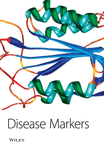International Standard Reagents for HPV Detection
Abstract
Humam papillomavirus is the commonest genital viral infection in healthy sexually active subjects, and the presence of chronic or persistent HPV types in genital cells may constitute a prognostic marker of underlying, or predict future HPV-associated diseases. A variety of novel tests for detecting the presence of oncogenic HPV types in biological specimens have been reported. These are based on the various stages of infection and viral life cycle. HPV infects squamous epithelium with expression of various gene products intimately linked to epithelial cell differentiation. Hence, there are basically three classes of detectable markers directly derived from HPVs: molecular markers based on detection of nucleic acid sequences, serological markers based on detection of antibodies against viral proteins, and cellular markers based on detection of proteins expressed intracellularly, upon either infection or carcinogenesis. The nature of various assays and the development of international standard reagents for qualitative and quantitative assessment of assay performance are outlined. There is an increasing demand to develop standard tools to assess the quality of HPV detection systems, for regulatory and clinical management purposes. International standard reagents for HPV will help defining the analytical sensitivity and specificity of various detection methods, and will allow assuring that laboratory services used to evaluate disease burden, HPV vaccines, and cancer prevention strategies are accurate and comparable worldwide. The advancement of prophylactic vaccine candidates against HPV infections and related diseases stresses the increasing importance of HPV assays in monitoring the impact of HPV vaccination on disease burden.




